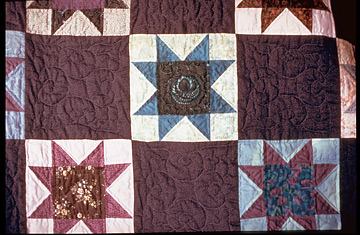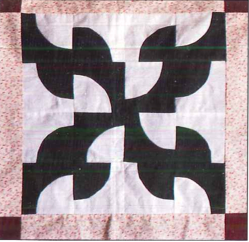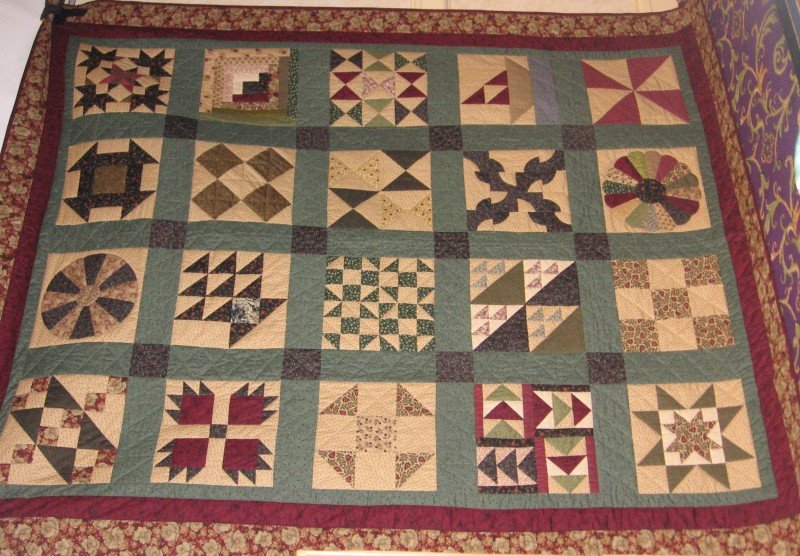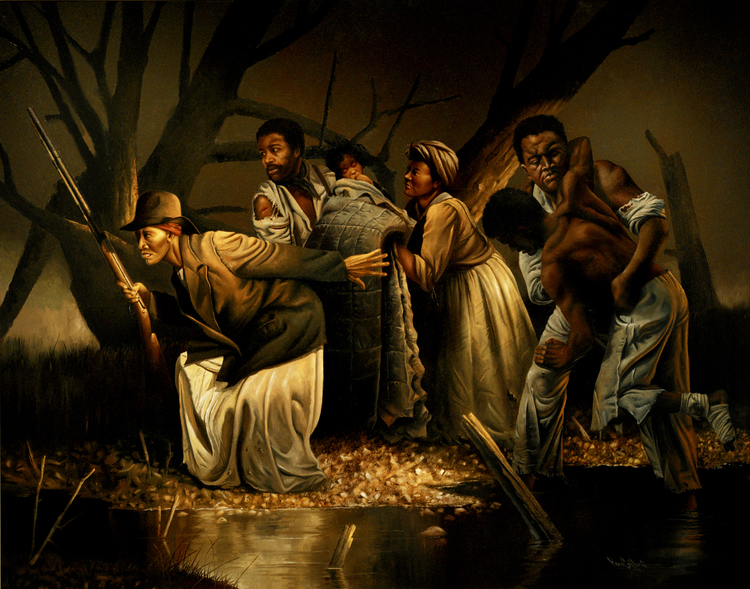Cleo Thoughts, Quilts, Underground Railroad
Freedom Quilts: Piecing Escape on the Underground Railroad
“Quilts are active agents in history and vivid storytellers.”
(Click the text above to learn about Macia Fuller and her Underground Railroad quilts.)
Women with needles.
Creating maps and codes.
Freeing countless precious souls from slavery.
One group of stitchers was the Quakers who ran the safe houses, or stations along the underground railroad. These women created a code to help the conductors plan safe routes for the fugitives. Protection from the slave catchers stalking the escapees as they traveled the 10 to 20 miles between stations with the North Star as their guide. The Quaker women made quilts with several designs to communicate to the conductors. By hanging the quilts in the window or over a fence, a message for safety was sent. For example, the Bow Ties patterned quilt denoted a house where a change of clothing was available.
The Drunkard’s Path warned of slave hunters and hounds, encouraging a zigzag route. Ozella Williams from the historic Old Marketplace of Charleston, South Carolina, relates her own family oral traditions about how quilts were used as a code. Williams indicates ten patterns directed the escapees to take particular action. This use of secret messages is given life in the picture books: Under the Quilt of Night, by Deborah Hopkinson, and Secret to Freedom, by Marcia Vaughan. An historic novel, Path of Freedom, by Jennifer Hudson Taylor, highlights the work of the Quakers and their quilts on the underground railroad.
The other group of stitchers creating the escape quilts was women whose culture connected fabric and message. Africans wove patterns into cloth that communicated ideas, so the concept of applique and embroidery to create maps that pointed to freedom is logical. Several picture books explain how this might have transpired in the slave quarters of a plantation. Sweet Clara and the Freedom Quilt, by Deborah Hopkinson is the classic. The Patchwork Path, by Bettye Stroud, also describes how map quilts could have been stitched and utilized. The concept of slave women fashioning maps from scraps of cloth is intriguing.
The 1999 book, Hidden in Plain View, by Raymond Dobard, an art historian, and Jacqueline Tobin, a college instructor in Colorado, is the basis for the theory that quilts were used to communicate information about conditions on the underground railroad to the conductors lurking in the shadows with precious passengers. Escaping slavery was generally an act of complex, sophisticated and covert systems of planning, so the whole quilt code resonates with many historians who believe oral tradition and family stories.
Example of codes. Photo credit: http://www.freewebs.com/societyofschoollibrarians/undergroundrailroadquilt.htm
Frankly, the whole idea of quilts playing a part in the freedom of human beings is one that I am able to accept. Women work together in ways that feed the human spirit and save lives. It is not hard for me to believe that stitch by stitch, white women and black women sewed the paths to freedom for those desperate to break their chains.
“If you hear the dogs, keep going. If you see the torches in the woods, keep going. If there’s shouting after you, keep going. Don’t ever stop. Keep going. If you want a taste of freedom, keep going.” Harriet Tubman
Where is Macia Fuller now? She’s serving in Ethiopia. Click here to find out more about the work she’s doing.
 Quilts are reflections of many historic eras. The historical fiction, Dust Between the Stitches, is a quilt story set in the Dust Bowl during the 1930’s. It tells the story of Addie Meyers as she tries to save the family homestead from foreclosure while teaching in a one room schoolhouse for script. Each chapter of the book starts with a quilt pattern, many of them based on Sunbonnet Sue and Overall Sam. A picture of life in the Dust Bowl emerges in this novel that will warm your heart and inspire your faith.
Quilts are reflections of many historic eras. The historical fiction, Dust Between the Stitches, is a quilt story set in the Dust Bowl during the 1930’s. It tells the story of Addie Meyers as she tries to save the family homestead from foreclosure while teaching in a one room schoolhouse for script. Each chapter of the book starts with a quilt pattern, many of them based on Sunbonnet Sue and Overall Sam. A picture of life in the Dust Bowl emerges in this novel that will warm your heart and inspire your faith.




